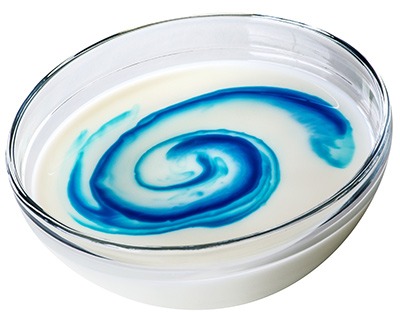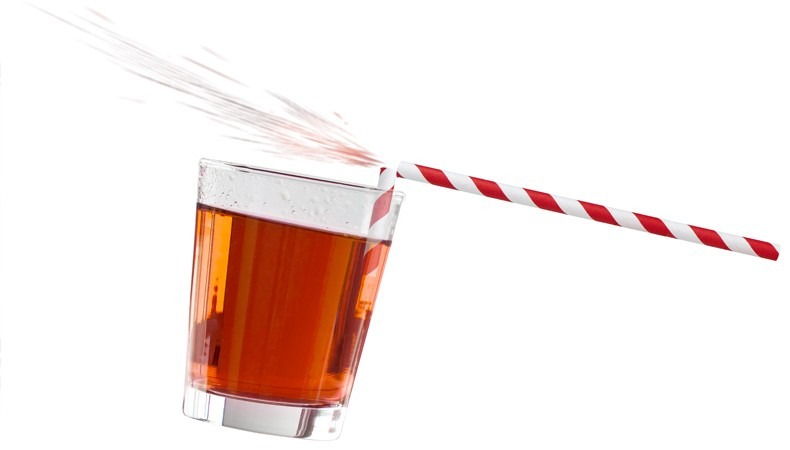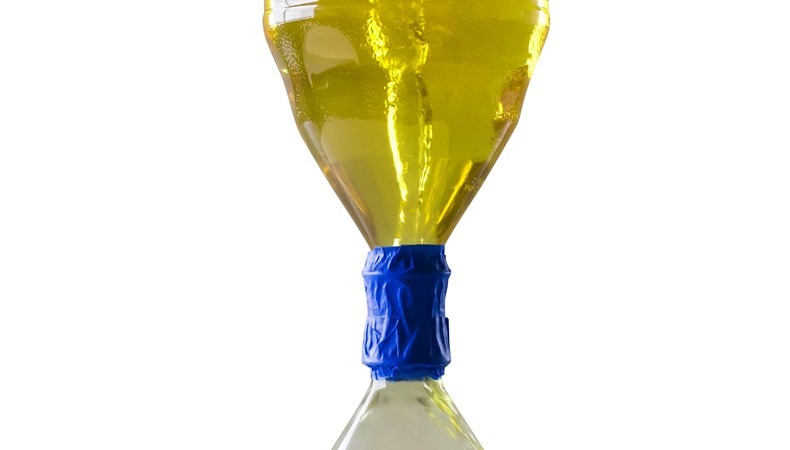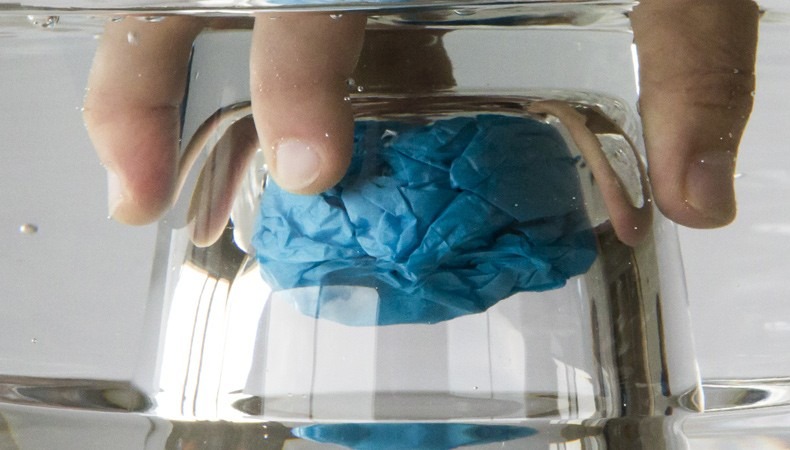A viscous vortex
Grades 2, 6, and 8 (Ontario)
Elementary cycles 1 and 2 (Quebec)
Watch what happens when you drop food colouring into milk in this fascinating experiment that requires few materials.

Share :
Curriculum links
Grade 2
Science and technology: Understanding matter and energy
- Properties of liquids and solids
- Investigate the properties of liquids
- Investigate, through experimentation, interactions that occur as a result of mixing and/or dissolving . . . liquids and liquids
- Identify objects in the natural and built environments as solids or liquids
- Describe the properties of . . . liquids (e.g., they take the shape of the container they are in, and can be poured)
Grade 6
Science and technology: Understanding structures and mechanisms
- Flight
- Use scientific inquiry/experimentation skills to investigate the properties of air
- Identify the properties of air that make flight possible
Grade 8
Science and technology: Understanding matter and energy
- Fluids
- Investigate and compare the density of a variety of liquids
Elementary cycle 1
Science and technology: The material world
- Mixtures
- Miscible and nonmiscible substances
Elementary cycle 2
Science and technology: Earth and space
- Matter
- Properties and characteristics of matter on Earth
- Soil, water and air
Materials
- A clear, round container (a bowl or wide-mouthed drinking glass)
- Milk
- Food colouring
- A stir stick (a popsicle stick or any similar thin object works fine)
Procedure
- Fill the container with milk.
- Let the container sit so that the milk settles and becomes still.
- Carefully add a drop of food colouring to the centre of the container.
- Using the stir stick, gently drag some of the food colouring around in a circular motion.
- Observe and record what happens!
Tips: Wait for the food colouring to resurface after you drop it into the milk (it only takes a second). You only need to give the food colouring a very short, gentle nudge to get it moving. If it doesn’t do what you want, you can try again a couple times if you are careful.

Suggestions for art activities
This experiment lends itself well to all types of paintings and drawings. Students could use chalk or pastels — even changing the background colour to black for a different effect.
Have students try placing a piece of paper on top of the bowl to soak up the pattern and capture a moment in time.
You may also be interested in

The Venturi Effect
The Venturi Effect can be hard to explain, but this showy experiment helps it all make sense, with simple materials.

Tornado-in-a-bottle
Tornados, whirlpools, even galaxies are all vortexes. Explain how they work with this fun and simple tornado-in-a-bottle.

Napkin in water
If you’ve got budding magicians in your class, this is the experiment that requires few materials that is made for them!